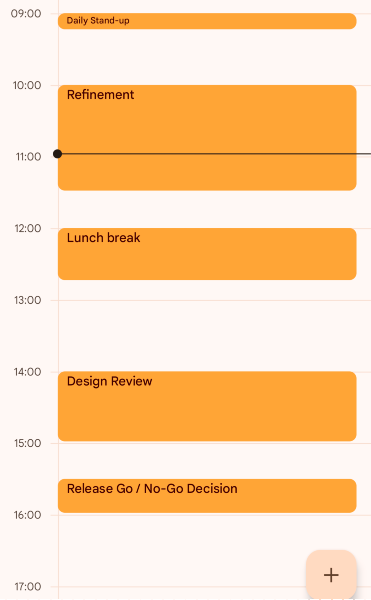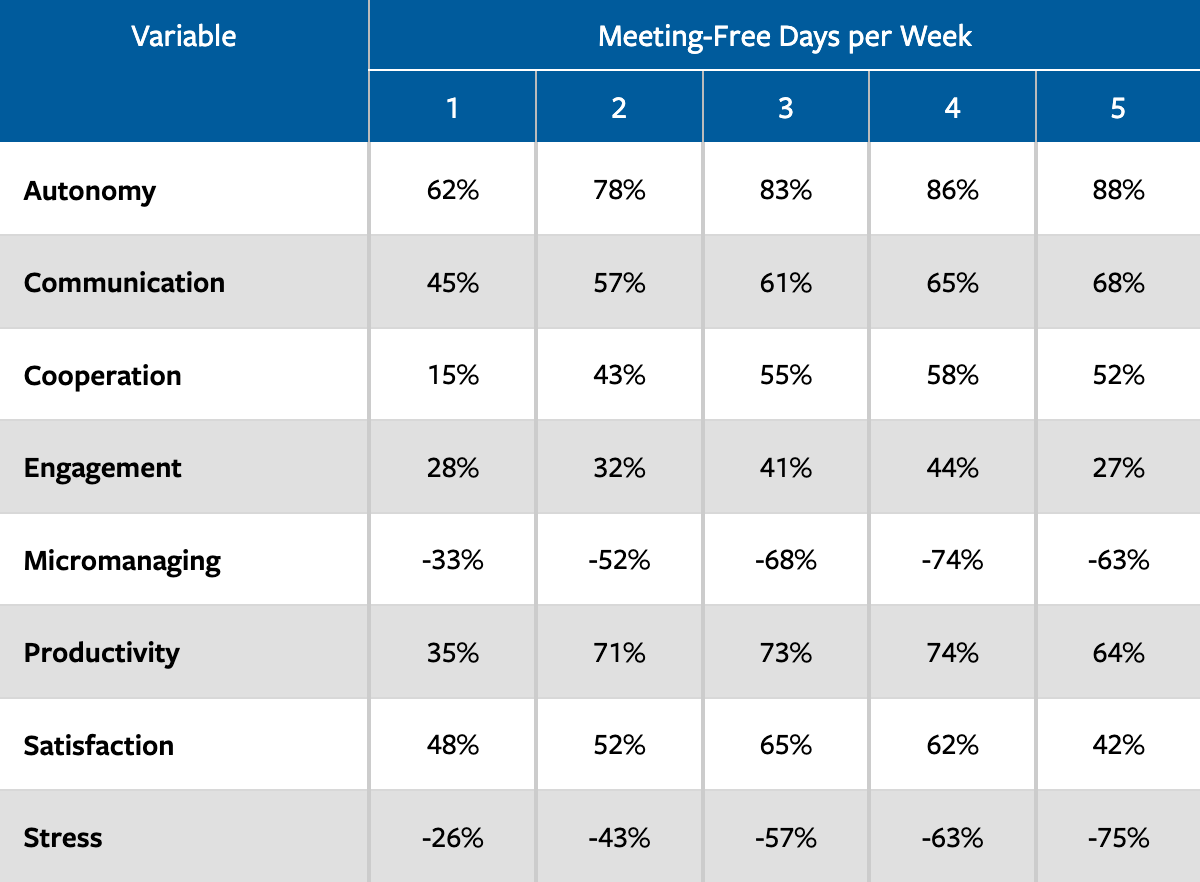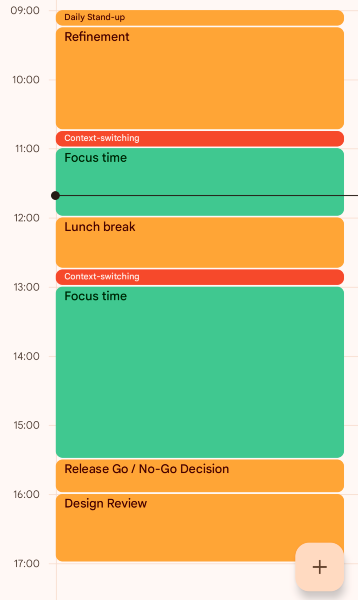How You’re Accidentally Blocking Your Team’s Best Work (PW #17)
How a few simple rules can boost your teams productivity. Sticking to a few simple scheduling rules can maximize the amount of focus time your team has on a daily basis!

Fun fact: did you know that developer output increases by 3.4x when they get 2 hours or more of uninterrupted focus time?
And did you also know that most developers only spend a maximum of 40% of their workday in a focussed state?
And to top it off: that most office workers spend 85% or more of their time in meetings?? (As a Product Manager you are likely at the far edge of that bell-curve...)
These stats paint a bleak picture of productivity if you ask me... But how do they actually impact you as a Product Manager? And your development team? Let's use an example to illustrate.
Imagine we have a small product team, consisting of 3 developers (let's call them Bob, Alice and Peter) and a Product Manager: Jessica. A typical day might look like this in the calendar of one of the developers:

What do you notice when you look at this calendar? From your perspective as a PM, this might actually look like a laid-back day. No back-to-back meetings, yay!
But focus on the blank spaces. And count how much time is in between every meeting. In this example, the largest no-meetings block any developer will have that day is just 1 hour and 15 minutes, right after lunch.
Most people need anywhere from 15-60 minutes to go from starting a task, to reaching a state of focus or flow. Taking the optimistic view (assuming 15 minutes of startup time): this work day will only have about 2:45 hours of actual focus time for your development team.
In the pessimistic view (assuming 60 minutes of startup time) there's actually only room for 15 minutes of deep focus work in the entire day...
So in reality, the calendar for your team mates looks more like this:

And this example assumes no other distractions, no coffee breaks, no colleagues popping by, no Slack notifications, etc.
How Can You Help Your Team Gain More Focus Time?
As a Product Manager you are actually well-positioned to make a meaningful difference here. No, you probably cannot remove all meetings from the calendar. Meetings are not necessarily evil, they can serve a purpose.
But by sticking to a few simple scheduling rules, you can maximize the amount of focus time your team has on a daily basis!
Your ultimate goal should be:
There are some really simple scheduling rules you can apply to make this happen.
Rule #1: Consolidate Meetings To Specific Days of The Week
The first priority is to consolidate meetings to specific days of the week as much as possible. This means rescheduling some recurring meetings to be less spread out across the week.
This immediately results in some days being more meeting-heavy, and others maybe even becoming meeting-less, or at the very least light on meetings.
Rule #2: Consolidate Meetings To The Morning Or Afternoon
Once you have consolidated the weekly schedule, it's time to consolidate meeting timeslots within the days as well. In general it's best to schedule meetings in either the morning or afternoon, but not both.
For example: leaving the morning free of meetings gives your team mates the opportunity to really dive into their work, at a time where most people are at their peak-productivity level. This is actually worth discussing with your team, to figure out where their peak-productivity moments are in the day.
However, circumstances might sometimes require meetings in both the morning and afternoon. In that case: try to maximize the focus time in between. Plan your meetings at the start of the day, and the end of the day, but not in the middle of the day.
Rule #3: Don't Plan Meetings In The Middle Of A Focus Block
There will still be meetings planned with your team, and that is okay. But when scheduling, try to put them at the very beginning or the end of a 2 hour focus block. Yes this will eat some focus time, but it's not as invasive as scheduling something right in the middle of focus time.
Rule #4: Institute One (Or Several) No-Meeting Days
Going one step further: it can be enormously beneficial to have one or more no-meeting days during the week. If you can work with your team to find at least one no-meeting day during the week, you'll see incredible boosts in productivity and job satisfaction.

Once you identify a no-meeting day, be extremely strict about guarding this. And ask your team mates to do the same. Accepting meetings on this day "just this once" is a slippery slope...
What Is The End Result?
After applying these simple rules, the example team's calendar will look like this:

As you can see, the amount of context-switching is lowered, and the focus time blocks are much larger. This schedule gives the developers on the team a total of 3,5 hours of focus time.
And we actually did not remove any meetings... They've merely been rescheduled in a more optimal way.
Do you think this can help your team be more productive? Forward this to your teammates, Scrum Master, Product Owner, Product Manager, or whomever else. And start the discussion around productivity and the negative impact of meetings!